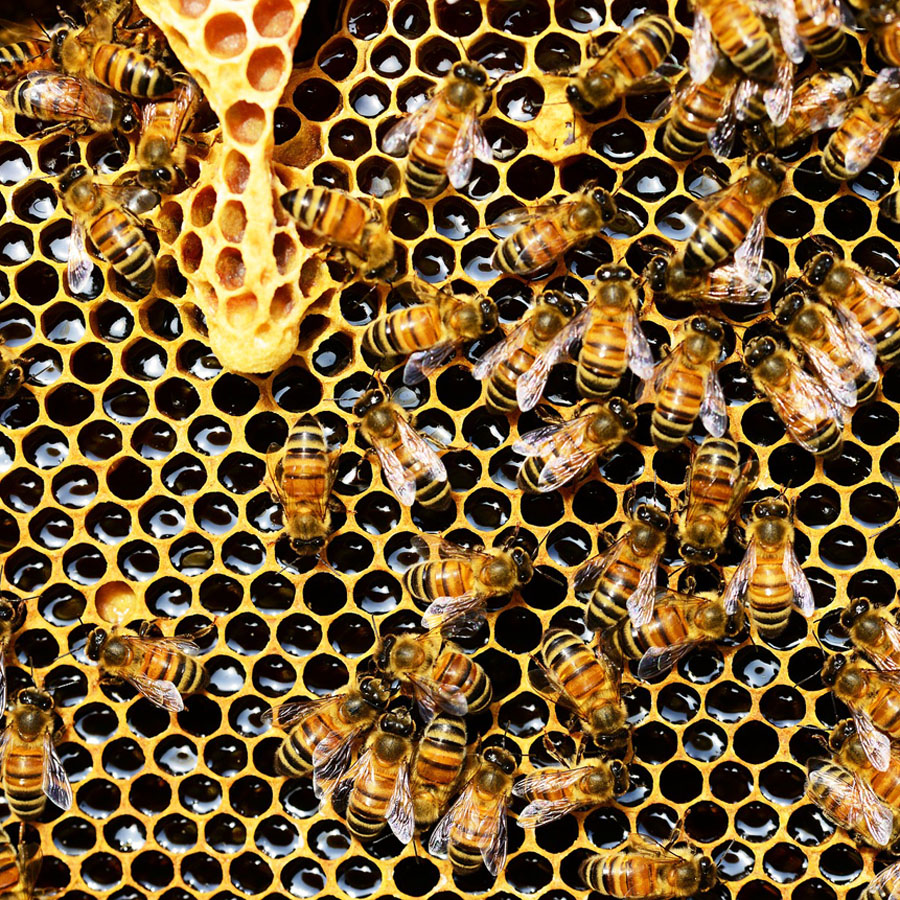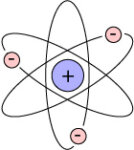Honey and bee venom have been used in folk medicine for thousands of years, but they’ve made a recent resurgence in skincare. Here’s the science behind these ingredients.

Honey in Skincare
Honey is formed from nectar and pollen by bees through a process of partial digestion (don’t think too hard about it if you want to enjoy honey ever again). On the regular skincare front, honey is a humectant moisturiser, capable of binding water to the skin to keep it hydrated. There’s also some evidence that honey is effective for speeding up healing for some wounds. Honey also acts as an antibacterial in vitro (in the lab) in a few different ways, depending on the type of honey:
- low pH, which is unsuitable for the survival of many microorganisms
- high osmolarity (high sugar/low water combination), which can suck water out of bacterial cells
- slow release of hydrogen peroxide, which kills bacteria while limiting damage to the skin
- bee defensin-1, an antimicrobial peptide thought to be part of the bee immune system (also found in royal jelly)
- methylglyoxal, an antibacterial compound that’s particularly high in manuka honey (though it seems to be less important than previously though)
- other antibacterial chemicals such as polyphenols, flavonoids and inositol-like compounds
Manuka honey is particularly famous for its antibacterial effects, and excitingly, bacteria don’t seem to develop resistance to honey. However, there aren’t a lot of studies on how well honey works in skincare, on living humans, outside of wounds. One randomised controlled trial with 136 subjects found that kanuka (not a typo) honey didn’t have any effect on acne despite killing Propionibacterium acnes bacteria in vitro. A second randomised controlled trial with 138 subjects found that kanuka honey was effective for treating rosacea.
However, honey is a natural product and its composition and properties vary wildly depending on where it’s from and which flowers the bees use to make it (you’ll know this if you’ve tasted different honey varieties before). It’s possible that some varieties of honey could potentially have a effect on acne, but there’s no reliable evidence that it does yet. The concentration of honey used in the product also makes a difference to its antibacterial activity.
Bee Venom in Skincare
Bee venom is a defensive toxin produced by bees. It’s a complex mixture that mostly contains peptides, with the main peptide being melittin which makes up about 50% of bee venom. Like honey, bee venom was also used medicinally in ancient times and is experiencing a resurgence, with reported anti-inflammatory, antibacterial and analgesic properties that may be useful for arthritis and multiple sclerosis. In skincare, bee venom became popular in 2013 thanks to celebrities like Gwyneth Paltrow and Kate Middleton who credited bee venom injections for their glow.
The theory behind how bee venom products work, according to bee venom proponents, is that they replicate the effect of being lightly bee-stung. The venom increases blood flow which stimulates collagen and elastin production. Increased collagen and elastin plump up the skin, making it look toned and smooth, and reducing the appearance of fine lines and wrinkles. It makes sense in theory, but is there any hard proof?
Unfortunately, again, the answer is no. There are some preliminary studies (most from the same researcher) which suggest that bee venom would potentially be useful as an anti-aging ingredient, including:
- an in vitro study where bee venom increased the growth of skin cells
- a couple of in vitro studies where bee venom decreased the action of matrix metalloproteinases (MMPs) which destroy collagen when activated by UV light
- an uncontrolled study on 22 women where 0.006% bee venom serum decreased wrinkle depth
- a study on 30 people with acne where there was an average decrease in acne severity by 1 grade after 6 weeks of twice-daily treatment with Manuka Doctor ApiClear Foaming Cleanser and Skin Treatment Serum containing purified bee venom (no control)
Again, it looks promising, but I’m not ready to abandon my other anti-aging actives without some controlled trials. The other obvious disadvantage is that around 3% of the population is allergic to bee venom, and if you’re in that 3%, these products can cause a nasty reaction.
(In case you’re wondering, bee venom collection doesn’t hurt the bees. It’s collected using a piece of lightly electrified glass which attracts bees to sting it, leaving venom behind. The glass doesn’t retain the bees’ stingers, so they don’t die. Additional studies have shown that bee activity isn’t adversely affected by the process either.)
Honey and Bee Venom Products
I was intrigued enough by bee venom and honey to try out some products containing them. The three bee venom products I tried all contained honey as well.

- Antipodes Manuka Honey Skin Brightening Light Day Cream ($59.95 AUD) gave me the strongest skin tightening, numbing feeling. Along with bee venom and manuka honey, this honey-scented lotion also contains grapeseed extract which fades hyperpigmentation, and it dries matte so it’s great for oily skin.
- Manuka Doctor has several lines which contain bee venom. I haven’t tried the ApiClear line which was tested in the anti-acne trial linked above, but the Drops of Crystal line also contains bee venom. Manuka Doctor Drops of Crystal Cashmere Touch Serum ($39.95 AUD) has a nicely light texture, although I’m not too fond of the floral scent.
- Skin Doctors Beetox ($59.95 AUD) is a light honey-scented cream that contains royal jelly in addition to honey and bee venom, as well as Trylagen, a patented ingredient that’s supposed to increase collagen. It’s a bit more hydrating than the Antipodes cream.
Unfortunately, none of these products stated how much bee venom they contained, and since bee venom is usually used at less than 1%, its placement in the ingredients list doesn’t tell you much either. I found that I got the strongest plumping effect after around half an hour, and the effect lasted through most of the day, although the effect wasn’t that much different from a good hydrating product. I’m not convinced about the long-term effects, but the plumping and numbing effects are certainly good skincaretainment!
If you’re wary of bee venom, you might prefer to try a honey-only product like Comvita Medihoney Skintensive Cream ($16.95 AUD) that’s great at softening my cracked winter elbows, or a DIY honey mask (mix honey with a bit of water until it’s comfortably spreadable and apply; rinse off after 15 min).
Have you tried honey or bee venom products? What did you think of them?
References
MD Mandal & S Mandal, Honey: its medicinal property and antibacterial activity (open access), Asian Pac J Trop Biomed 2011, 1, 154–160 (doi: 10.1016/S2221-1691(11)60016-6)
AB Jull, N Cullum, JC Dumville, MJ Westby, S Deshpande & N Walker, Honey as a topical treatment for wounds, Cochrane Database Syst Rev 2015 CD005083 (doi: 10.1002/14651858.CD005083.pub4)
These products were provided for editorial consideration, which did not affect my opinion. This post also contains affiliate links – if you decide to click through and support Lab Muffin financially (at no extra cost to you), thank you! For more information, see Disclosure Policy.





Great analysis as usual.
By the way can you make one for hydrosols? I am curious if they have any benefits or not.
I’ll have to look into them! Thanks for the suggestion 🙂
I am using bee venom and propolis, I am using the Benton line. It is wonderful, I love it.
Thanks for this such in-depth article!
I’ve tried a few samples of Benton but not a full size yet – I’m a little concerned about conditions during travel and their relative lack of preservatives. Maybe I’ll order some when it’s colder again…
I have been using Skin Physica Bee Venom moisturiser for 3 weeks now and I honestly have notice a huge different in my skin! I was using it by chance… I had been given it and happened to run out of my regular moisturiser so I thought I’d use it while waiting to order my regular one! Results: noticeable difference with my acne, fuller, softer, smoother skin, reduction in acne scars!!! I am going to continue to use it to see if this is just a coincidence or what but the main thing I’ve noticed is my acne! When I started I had two big blind pimples that wouldn’t budge… they are completely gone! And I’ve only had one small pimple since using it!!!! Let’s see how it goes over the next couple of weeks!!!
That sounds fantastic! I’ve given my sister some of my bee venom products to try on her acne. I do wish there were more studies on bee venom and acne, but that clinical trial seems promising 🙂
This was a fantastic post! Well-done with a lot of great information.
Beth || http://www.TheStyleBouquet.com
Thank you!
Thanks for this post! I had no idea honey has anti-bacterial properties!!
Kristie
http://youtheworldwandering.com/
I used to work for a honey company and it is absolutely amazing what you learn about honey and how powerful it can be! 🙂
‘skincaretainment’. Haha! ? Thanks for a great post! Maybe one day more studies will be done. I haven’t used honey and thankfully so, because like you said, you have no idea what benefits you’re getting depending on where the honey is coming from! I’ll stick to it for my honey-lemon tea when I have a cold. Even so, I wonder what benefits I’m getting from ingesting it as I still don’t know the exact honey bees it came from LOL.
Yeah, I’m not sure either… but it tastes nice and smells good so any extra benefits are just a bonus IMO!
people make the switch to a non-toxic lifestyle and find amazing natural skin care. thanks.
The post was full of informations. Thank you.
Ahh, thank you for providing that info on how much bee venom as a percentage was used in testing! It’s a very tiny amount. I’d previously been skeptical of bee venom products as the bee venom tends to be at the very end of the ingredients list, including Benton Snailbee products when labelled for America (where the ingredient with the lowest amount must go at the end of the list). Maybe they are using a concentration of apitoxin that is closer to the studied amount? I can’t be sure.
Also I disbelieve companies when they say 10% bee venom. One product that claims that amount, actually had 10% of a bee venom EXTRACT that had 1ppm bee venom in it. (!) So that would actually be 0.00001% or one part per ten million in the finished product. Whew. The product range was simply called Bee Venom Skin Care and tells you a lot about how bee venom works on your skin. I’m just not sure at all that such a crazy tiny amount would do anything… that uncontrolled study used a product that is 600 times stronger.
Sorry for the long comment! Thanks again for your post!
First time I heard about bee venom, the article is very good, I love to try bee venom, thank you for sharing.